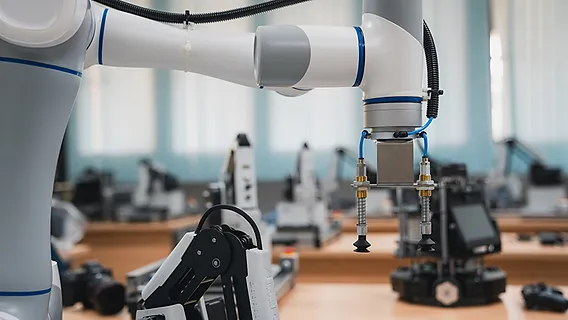In the fast-paced world of modern industry, achieving high precision while maintaining efficiency has become the defining challenge for manufacturers across the globe. At the heart of this transformation lies a powerful technology that is redefining production standards — robotic arms. These advanced mechanical tools have become indispensable in precision manufacturing, helping industries achieve a new level of consistency, accuracy, and productivity.
Robotic arms are engineered to replicate the dexterity and control of human arms but with greater endurance and zero fatigue. Unlike manual processes that are prone to human error, robotic arms operate with exacting accuracy down to microns, making them ideal for tasks requiring meticulous detail — from assembling microchips to welding automotive parts and even handling delicate medical equipment.
One of the key advantages of robotic arms in precision manufacturing is their repeatability. A robotic arm can perform the same motion thousands of times with minimal deviation, ensuring product uniformity and reducing the likelihood of defects. This is particularly valuable in industries like aerospace, electronics, and medical device manufacturing, where even the smallest flaw can have serious consequences.
Moreover, robotic arms contribute to faster turnaround times. As they can work continuously without breaks, production lines can operate 24/7, drastically increasing output without compromising on quality. This kind of efficiency gives manufacturers the agility they need to respond to dynamic market demands and customer needs in real time.
Another standout feature is the adaptability of robotic arms. Today’s models come equipped with advanced sensors, AI integration, and machine learning capabilities. This allows them to adjust to varying components, monitor their own performance, and improve their function over time. Smart robotic arms can identify anomalies, correct their course, and reduce scrap rates — all while maintaining optimal precision.
The safety aspect is also critical. Robotic arms are commonly used in environments that are hazardous to humans — such as those involving high temperatures, toxic substances, or heavy lifting. By taking over these dangerous tasks, robotic arms not only protect human workers but also ensure that these operations are carried out without delays or accidents.
From small-scale workshops to global manufacturing giants, robotic arms are no longer a luxury but a necessity. They represent the convergence of mechanical engineering, electronics, and software — a combination that brings precision manufacturing into a new era of innovation and reliability.
Investment in robotic arms is also a long-term cost-saving decision. While the initial setup might require capital, the reduced labor costs, minimal rework, faster production, and increased consistency offer an excellent return on investment. Plus, with modular designs and scalable systems, companies can expand or modify their robotic solutions as their production needs evolve.
In conclusion, robotic arms have proven themselves as game-changers in the precision manufacturing sector. Their ability to enhance accuracy, speed, and safety while reducing costs and errors positions them at the forefront of industrial progress. As technology continues to evolve, robotic arms will only become smarter and more integral to the future of manufacturing — making it not just a trend but a strategic asset for industries looking to stay ahead.

